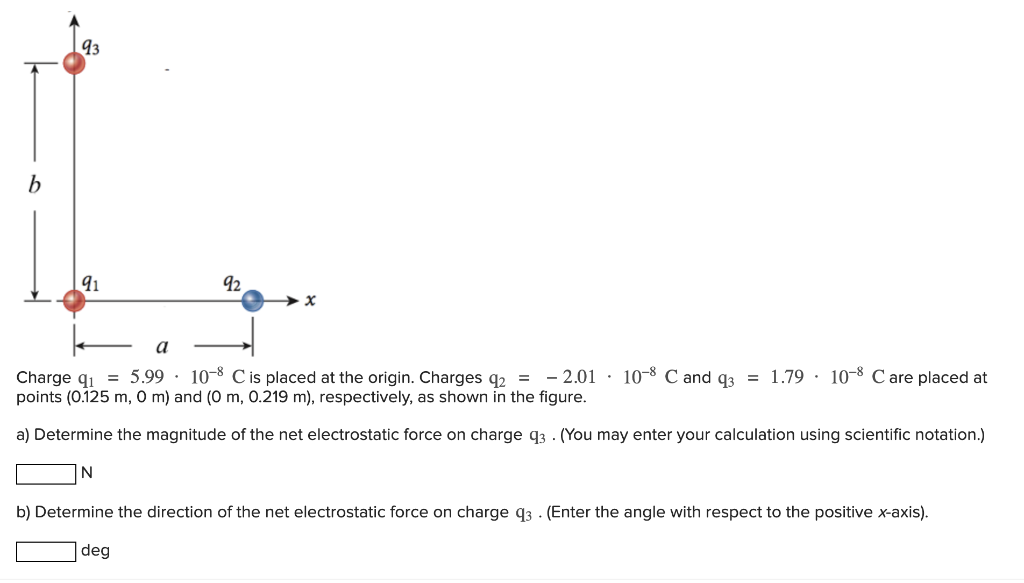Charge q1 = 5.99⋅10−8 C is placed at the origin. Charges q2 = −2.01⋅10−8 C and q3 = 1.79⋅10−8 C are placed at points (0.125 m, 0 m) and (0 m, 0.219 m), respectively, as shown in the figure. a) Determine the magnitude of the net electrostatic force on charge q3. (You may enter your calculation using scientific notation.) N b) Determine the direction of the net electrostatic force on charge q3. (Enter the angle with respect to the positive x-axis). deg
